- Home
- L. Ron Hubbard
Ole Doc Methuselah
Ole Doc Methuselah Read online
Also by
L. Ron Hubbard
Buckskin Brigades
The Conquest of Space
The Dangerous Dimension
Death’s Deputy
The End is Not Yet
Fear
Final Blackout
The Kilkenny Cats
The Mission Earth Dekalogy*
Volume 1: The Invaders Plan
Volume 2: Black Genesis
Volume 3: The Enemy Within
Volume 4: An Alien Affair
Volume 5: Fortune of Fear
Volume 6: Death Quest
Volume 7: Voyage of Vengeance
Volume 8: Disaster
Volume 9: Villainy Victorious
Volume 10: The Doomed Planet
Ole Doc Methuselah
Slaves of Sleep & The Masters of Sleep
To the Stars
Triton
Typewriter in the Sky
The Ultimate Adventure
* Dekalogy—a group of ten volumes
For more information on L. Ron Hubbard and his many works of fiction visit www.GalaxyPress.com.
Galaxy Press
7051 Hollywood Boulevard
Los Angeles, CA 90028
OLE DOC METHUSELAH
©1992 L. Ron Hubbard Library. All Rights Reserved.
Any unauthorized copying, translation, duplication, importation or distribution, in whole or in part, by any means, including electronic copying, storage or transmission, is a violation of applicable laws.
Cover Art: Gerry Grace
Cover artwork: © 1992 L. Ron Hubbard Library. All Rights Reserved.
ISBN: 978-1-59212-599-9
Contents
Introduction
Preface
Ole Doc Methuselah
Chapter One
Chapter Two
Chapter Three
Chapter Four
Chapter Five
Chapter Six
Her Majesty's Aberration
The Expensive Slaves
The Great Air Monopoly
Plague
A Sound Investment
Ole Mother Methuselah
Glossary
About the Author
Introduction
It was the autumn of 1947—the tenth year of a golden age for John W. Campbell’s Astounding Science Fiction, the magazine that had reshaped and redefined science fiction into its modern form. Campbell, coming to the editorship of Astounding at the age of 27 in October, 1937, had tossed out within a year or two most of the old-guard writers who had dominated the magazine, and had brought in a crowd of bright and talented newcomers: such people as Robert A. Heinlein, Isaac Asimov, L. Ron Hubbard, A.E. van Vogt, L. Sprague de Camp, Theodore Sturgeon, Fritz Leiber, Lester del Rey. They—and a few veterans like Jack Williamson and Clifford D. Simak—wrote a revolutionary new kind of science fiction for Campbell, brisk and crisp of style, fresh and lively and often irreverent in matters of theme, plot and characterization. The readers loved it. Astounding was the place where all the best stories were—many of them now classics, which have stayed in print for fifty years—and both the magazine and its larger-than-life editor were regarded with awe and reverence by its readership and by most of its writers as well.
Hubbard—whose famous writing career had begun in the early 1930’s in such wild-and-wooly pulps as Thrilling Adventures, Phantom Detective, Cowboy Stories, and Top Notch, and the more prestigious magazines as Argosy, Adventure, Western Stories, Popular Detective and Five Novels Monthly, had been especially commissioned by publishers Street & Smith to write for Astounding magazine’s editor John W. Campbell Jr. in 1938. At 27, just a few months younger than Campbell, he was already the author of millions of published words of fiction, and Campbell wanted him for his knack of fast-paced story-telling and his bold ideas. Soon Hubbard was a top figure in the Astounding of the 1940’s and in its short-lived but distinguished fantasy companion, Unknown, with such Hubbard stories and novels as “The Tramp” (1938), “Slaves of Sleep” (1939), “Typewriter in the Sky” (1940), “Final Blackout” (1940), “Fear” (1940), “The Case of The Friendly Corpse” (1941) and “The Invaders” (1942). But then Hubbard too went off to military service, and his contributions to Campbell’s magazines ceased for five years.
The extent of Hubbard’s popularity among the readers of Astounding and Unknown in the first few years of Campbell’s Golden Age was enormous. No better proof of that can be provided than a letter from a young reader that was published in the April, 1940 issue of Unknown, listing his ten favorite stories of 1939. Three of them—“The Ultimate Adventure,” “Ghoul” and “Slaves of Sleep”—were by L. Ron Hubbard. (The young reader’s name was Isaac Asimov, who would soon be one of Campbell’s Golden Age stalwarts himself.) So when Hubbard finally returned to the pages of Astounding in the August, 1947 issue with a grim three-part novel of the postwar atomic-age world, “The End Is Not Yet,” reader response was enthusiastic.
But there was more to Hubbard’s return than the readers of that season suspected. Even while “The End Is Not Yet” was still being serialized, Campbell began to offer them the start of another major Hubbard enterprise—the first of a series of high-spirited space adventures under the pseudonym of Rene Lafayette. Entitled “Ole Doc Methuselah,” it appeared—without any of Campbell’s customary advance build-up—as the lead story of the October, 1947 Astounding, which also carried the final segment of the Hubbard novel.
The “Lafayette” pseudonym was not new. Hubbard had used it at least once before, in the April, 1940 issue of Unknown, on a short novel called “The Indigestible Triton.” The name was simply a variation on Hubbard’s own—(the “L.” in “L. Ron Hubbard” stands for “Lafayette”)—and almost certainly was used on “The Indigestible Triton” because of the extraordinary number of Hubbard stories that had been appearing in Campbell’s magazines in 1940: editors often get uneasy when one writer appears to be too prolific. Very likely the pseudonym was revived for “Ole Doc Methuselah” for much the same reason. With “The End Is Not Yet” already running in Astounding, Campbell would not have wanted to use the same author’s byline twice in the same issue.
“Ole Doc Methuselah”—the first of the seven galactic exploits in the book you are now holding—is an entertaining adventure hearkening back to Hubbard’s other genre writing—perhaps reminiscent of one of his classic westerns: The glamorous, mysterious young doctor and his comic but highly effective sidekick come riding into town to set things straight. The bad guys have set up a phony land-development scheme, saying that the railway will be coming through soon and everybody in town will get rich. But of course it’s a swindle, and it will be up to the young doctor and his buddy to defeat the villains and set everything to rights.
The readers loved it. “The Analytical Laboratory,” the reader-response poll that Campbell published every month, reported in the January, 1948 Astounding that it had been the most popular story in the October issue. (The conclusion of Hubbard’s “The End Is Not Yet” serial finished in second place.) Campbell himself noted, in commenting on the results, that he personally would classify the story “as fun rather than cerebral science fiction—and its position [in the poll] testifies that any type of science-fiction, well done, will take a first place!”
Cartier’s lively, boldly outlined drawings provided images of Doc and his alien slave Hippocrates as definitive as those that Tenniel did for Lewis Carroll’s “Alice in Wonderland,” and gave the reader a cue not to take the story too seriously. Everyone knew right away that Ole Doc was a high-spirited romp—Campbell and Hubbard in an unbuttoned mood, sharing some fun with their readers for some great entertainment.
Cartier, who illustrated more sto
ries by Hubbard than anyone else, has written fondly of his association with Hubbard’s work and with “Ole Doc Methuselah“ in particular. “Illustrating Ron’s tales was a welcome assignment,” he said, “because they always contained scenes or incidents I found easy to picture. With some writers’ work I puzzled for hours on what to draw and I sometimes had to contact Campbell for an idea. That never happened with a Hubbard story. His plots allowed my imagination to run wild and the ideas for my illustrations would quickly come to mind. . . . It was Ole Doc’s adventures that many people, including myself, recall most fondly. Readers like my depiction of Hippocrates and I always enjoyed drawing the little, anten-naed, four-armed creature. Oddly enough, in 1952 my wife, Gina, found a large five-legged frog in our yard. . . . Needless to say, the mutant frog was instantly dubbed Hippocrates or Pocrates, for short. He resided with honor in a garden pool and was featured in many local newspaper articles. The frog’s existence was as if Ron’s writings and my illustrations had come to life to prove that science fiction’s imaginative ideas are quite within the realm of possibility.”
A month after his debut, Ole Doc Methuselah returned, with “The Expensive Slaves“ in the November, 1947 issue. Again praised in the letter column of “The Analytical Laboratory,” there was no question that the series had been successfully launched, and the readers of the era—I was one-looked forward eagerly to the next episode.
They didn’t have long to wait. Doc was back in the March, 1948 issue with “Her Majesty’s Aberration.” The fourth in the series—“The Great Air Monopoly”—appeared in September, 1948. The April, 1949 issue brought “Plague,” a long lead story which gave the series its first display on Astounding’s cover. Two months later came “A Sound Investment.” (Campbell, announcing that story in the previous issue, commented, “This is one series in which the continuing hero is frankly and directly labeled as being deathless, incidentally; you won’t often find an author admitting that.” January, 1950 saw publication of “Ole Mother Methuselah,” the seventh of the Ole Doc Methuselah series.
And there the series ended. Hubbard had other projects of a whole new scope. In the May, 1950 Astounding Campbell published Hubbard’s non-fiction essay, “Dianetics, the Evolution of a Science,” and shortly afterward came Hubbard’s book, Dianetics, The Modern Science of Mental Health. It would be many years before Hubbard would write science fiction again.
Ole Doc Methuselah—the seven stories collected here is Hubbard’s most genial book. We see amiably miraculous events described in broad, vigorous strokes. Ole Doc, in three hours of deft plastic surgery, undoes an entrenched tyranny and restores an entire world’s social balance. Space pirates, land barons, vindictive Graustarkian queens, sinister magnates who make air a marketable commodity—nothing is too wild, too implausible, for the protean Hubbard. The immortal (but human and sometimes fallible) superhero and his wry, nagging alien pal are plainly destined to succeed in everything they attempt, and the key question is not if but how they will undo the villain and repair the damage that he has done.
That having been said, though, it would be a mistake to minimize these seven stories as light literature turned out by a great science-fiction writer in a casual mood. They have their roots in pulp-magazine techniques, but so did nearly everything that Campbell published in that era. In a time before network television and paperback books, the pulp magazines were the primary source of entertainment for millions of readers, and the best pulp writers were masters of the art of narrative.
The action in the Methuselah stories is fast and flamboyant and the inventiveness breathless and hectic. The mind of a shrewd and skilled storyteller can be observed at work on every page, and the stories grow richer and deeper as the series progresses—note, particularly, the touching moment in “The Great Air Monopoly” when Doc enters Hippocrates’ working quarters aboard their ship. (“A bowl of gooey gypsum and mustard, the slave’s favorite concoction for himself, stood half eaten on the sink, spoon drifting minutely from an upright position to the edge of the bowl as the neglected mixture hardened. A small, pink-bellied god grinned forlornly in a niche, gazing at the half-finished page of a letter to some outlandish world. . . . Ole Doc closed the galley softly as though he had been intruding on a private life and stood outside, hand still on the latch. For a long, long time he had never thought about it. But life without Hippocrates would be a desperate hard thing to bear.”) And though a lot of Doc’s medicinal techniques look more like magic to us, I remind you of Arthur C. Clarke’s famous dictum that the farther we peer into the future, the more closely science will seem to us to resemble magic. Ole Doc is nine hundred years old—he took his medical degree from Johns Hopkins in 1946—and looks about twenty-five; but who is to say that people now living will not survive to range the starways nine hundred years from now? It may not be likely, but it’s at least conceivable—and fun to think about.
The stories are good-natured entertainment; and they give us something to think about. As Alva Rogers pointed out in A Requiem for Astounding, his classic history of John Campbell’s great magazine, “The ‘Ole Doc Methuselah’ stories were immensely enjoyable; there was nothing pretentious about them, they were full of rousing action, colorful characters, spiced with wit, and yet, underneath it all, had some serious speculative ideas about one possible course organized medicine might take in the future and a picture of medical advances that was very intriguing.” They were well-loved stories in their day, rich with their sense of wonder; and here they are again, to delight, amuse and amaze a new readership now.
— Robert Silverberg
Award-winning author, Robert Silverberg, has written over 100 books and numerous short stories—and is equally renowned as a top editor of science fiction anthologies.
— The Publisher
Preface
The Universal Medical Society—is the supreme council of physicians organized in the late Twenty-third century after the famous Revolt Caduceus which claimed the lives of two billion humanoids of the Earth-Arcton Empire through the villainous use of new medical discoveries to wage war and dominate entire countries. George Moulton, MD, Dr. Hubert Sands the physio-chemist, James J. Lufberry, MD, and Stephen Thomas Metridge, MD, who was later to become as well known as Ole Doc Methuselah, had for nearly a hundred years kept to a laboratory studying far beyond contemporary skills and incidentally extending their work by extending their own lives, came out of retirement, issued a pronunciamento—backed with atomic and du-ray hand weapons and a thousand counter-toxins—which denied to the casual practitioner all specialized medical secrets. Thus peace came to the Empire. Other systems anxiously clamored for similar aid and other great names of medicine quietly joined them. For centuries, as the Universal Medical Society, these men, hiding great names under nicknames, who eventually became a fixed seven hundred number, maintained a Center and by casual patrol of the Systems kept medicine as well as disease within rational bounds. Saluting no government, collecting no fees, permitting no infringement, the UMS became dreaded and revered as The Soldiers of Light and under the symbol of the crossed ray rods impinged their will upon the governments of space under a code of their own more rigorous than any code of laws. For the detailed records and history of the UMS, for conditions governing the hundred-year apprenticeship all future members must serve and for the special codes of call and appeal to the UMS in case of plague or disaster, consult L. Ron Hubbard’s “Conquest of Space,” 29th Volume, Chapter XCLII.
Rene LaFayette
Ole Doc Methuselah
Chapter One
Ole Doc Methuselah wasn’t thinking what he was doing or he never would have landed on Spico that tempestuous afternoon. He had been working out some new formulas for cellular radiation—in his head as usual, he never could find his log tables—and the act of also navigating his rocket ship must have been an unconcious too much for him. He saw the asteroid planet, de-translated his speed and landed.
He sat there for some time at the controls, gazing
out into the pleasant meadow and at the brook which wandered so invitingly upon it, and finishing up his tabulations.
When he had written down the answer on his gauntlet cuff—his filing system was full of torn scraps of cuffs—he felt very pleased with himself. He had mostly forgotten where he had been going, but he was going to pour the pile to her when his eye focused upon the brook. Ole Doc took his finger off the booster switch and grinned.
“That sure is green grass,” he said with a pleased sigh. And then he looked up over the control panels where he hung his fishing rod.
Lord knows what would have happened to Junction City if Ole Doc hadn’t decided to go fishing that day.
Seated on the lower step of the port ladder, Hippocrates patiently watched his god toss flies into the water with a deft and expert hand. Hippocrates was a sort of cross between several things. Ole Doc had picked him up cheap at an auction on Zeno just after the Trans-System War. At the time he had meant to discover some things about his purchase, such as his metabolism and why he dieted solely on gypsum, but that had been thirty years ago and Hippocrates had been an easy habit to acquire. Unpigmented, four-handed and silent as space itself, Hippocrates had set himself the scattered task of remembering all the things Ole Doc always forgot. He sat now, remembering—particularly that Ole Doc had some of his own medicine to take at thirty-six o’clock—and he might have sat there that way for hours and hours, phonograph-recordwise, if a radiating pellet hadn’t come with a sharp zip past his left antenna to land with a clang on the Morgue’s thick hull.
ZIP! CLANG!
Page forty-nine of the Tales of the Early Space Pioneers went smoothly into operation in Hippocrates’ gifted if unimaginative skull, which page translated itself into unruffled action.
He went inside and threw on Force Field Beta minus the Nine Hundred and Sixtieth Degree Arc, that being where Ole Doc was. Seeing that his worshiped master went on fishing, either unwitting or uncaring, Hippocrates then served out blasters and twenty rounds to himself and went back to sit on the bottom step of the port ladder.

 Fifty-Fifty O'Brien
Fifty-Fifty O'Brien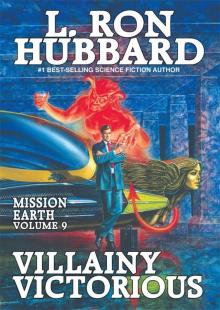 Villainy Victorious
Villainy Victorious Spy Killer
Spy Killer Ai! Pedrito!: When Intelligence Goes Wrong
Ai! Pedrito!: When Intelligence Goes Wrong The Dangerous Dimension
The Dangerous Dimension Mission Earth Volume 1: The Invaders Plan
Mission Earth Volume 1: The Invaders Plan The Slickers
The Slickers If I Were You
If I Were You The Doomed Planet
The Doomed Planet Writers of the Future Volume 31
Writers of the Future Volume 31 Mission Earth Volume 2: Black Genesis
Mission Earth Volume 2: Black Genesis Writers of the Future: 29
Writers of the Future: 29 Death Quest
Death Quest The Enemy Within
The Enemy Within Orders Is Orders
Orders Is Orders Hell's Legionnaire
Hell's Legionnaire L. Ron Hubbard Presents Writers of the Future 34
L. Ron Hubbard Presents Writers of the Future 34 The Scifi & Fantasy Collection
The Scifi & Fantasy Collection Dead Men Kill
Dead Men Kill Ole Doc Methuselah: The Intergalactic Adventures of the Soldier of Light
Ole Doc Methuselah: The Intergalactic Adventures of the Soldier of Light Shadows From Boot Hill
Shadows From Boot Hill Hurricane
Hurricane Mission Earth Volume 3: The Enemy Within
Mission Earth Volume 3: The Enemy Within Slaves of Sleep & the Masters of Sleep
Slaves of Sleep & the Masters of Sleep One Was Stubborn
One Was Stubborn Final Blackout: A Futuristic War Novel
Final Blackout: A Futuristic War Novel Devil's Manhunt
Devil's Manhunt A Matter of Matter
A Matter of Matter Voyage of Vengeance
Voyage of Vengeance If I Were You (Science Fiction & Fantasy Short Stories Collection)
If I Were You (Science Fiction & Fantasy Short Stories Collection) L. Ron Hubbard Presents Writers of the Future Volume 35
L. Ron Hubbard Presents Writers of the Future Volume 35 Mission Earth Volume 4: An Alien Affair
Mission Earth Volume 4: An Alien Affair Black Genesis
Black Genesis Tinhorn's Daughter
Tinhorn's Daughter Trouble on His Wings
Trouble on His Wings Writers of the Future Volume 27: The Best New Science Fiction and Fantasy of the Year
Writers of the Future Volume 27: The Best New Science Fiction and Fantasy of the Year Writers of the Future Volume 28: The Best New Science Fiction and Fantasy of the Year
Writers of the Future Volume 28: The Best New Science Fiction and Fantasy of the Year An Alien Affair
An Alien Affair Cargo of Coffins
Cargo of Coffins Mission Earth Volume 5: Fortune of Fear
Mission Earth Volume 5: Fortune of Fear Writers of the Future 32 Science Fiction & Fantasy Anthology
Writers of the Future 32 Science Fiction & Fantasy Anthology The Baron of Coyote River
The Baron of Coyote River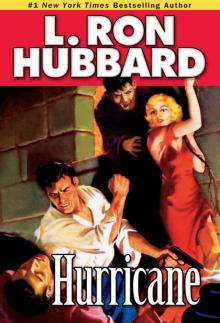 Hurricane (Stories From the Golden Age)
Hurricane (Stories From the Golden Age)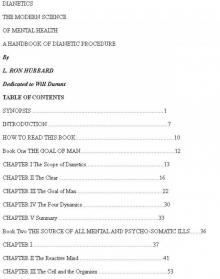 Dianetics: The Modern Science of Mental Health
Dianetics: The Modern Science of Mental Health Writers of the Future, Volume 30
Writers of the Future, Volume 30 Battlefield Earth: A Saga of the Year 3000
Battlefield Earth: A Saga of the Year 3000 Fear
Fear Disaster
Disaster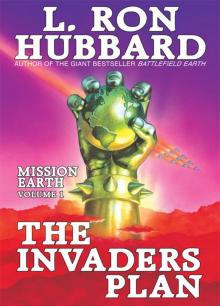 Invaders Plan, The: Mission Earth Volume 1
Invaders Plan, The: Mission Earth Volume 1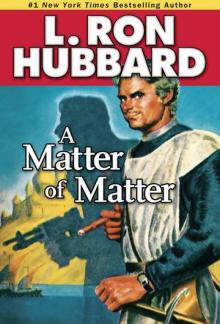 A Matter of Matter (Stories from the Golden Age)
A Matter of Matter (Stories from the Golden Age)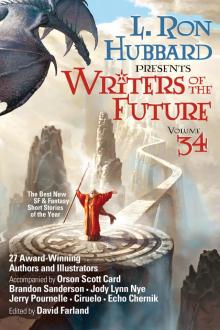 Writers of the Future Volume 34
Writers of the Future Volume 34 Death Waits at Sundown
Death Waits at Sundown One Was Stubbron
One Was Stubbron If I Were You (Stories from the Golden Age)
If I Were You (Stories from the Golden Age) Writers of the Future 32 Science Fiction & Fantasy Anthology (L. Ron Hubbard Presents Writers of the Future)
Writers of the Future 32 Science Fiction & Fantasy Anthology (L. Ron Hubbard Presents Writers of the Future) Writers of the Future, Volume 29
Writers of the Future, Volume 29 Mission Earth Volume 8: Disaster
Mission Earth Volume 8: Disaster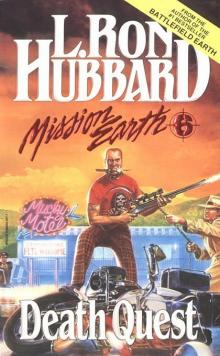 Mission Earth 6: Death Quest
Mission Earth 6: Death Quest Writers of the Future, Volume 27
Writers of the Future, Volume 27 Mission Earth Volume 7: Voyage of Vengeance
Mission Earth Volume 7: Voyage of Vengeance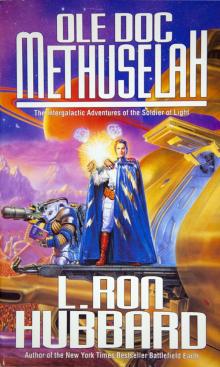 Ole Doc Methuselah
Ole Doc Methuselah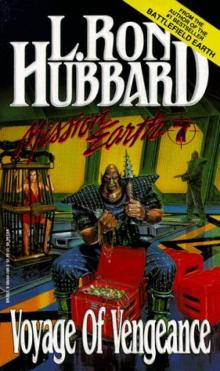 Mission Earth 07: Voyage of Vengeance
Mission Earth 07: Voyage of Vengeance Battlefield Earth
Battlefield Earth Fortune of Fear
Fortune of Fear Mission Earth 8: Disaster
Mission Earth 8: Disaster Mission Earth Volume 10: The Doomed Planet
Mission Earth Volume 10: The Doomed Planet Writers of the Future, Volume 28
Writers of the Future, Volume 28 Mission Earth Volume 6: Death Quest
Mission Earth Volume 6: Death Quest Dead Men Kill (Stories from the Golden Age)
Dead Men Kill (Stories from the Golden Age) Mission Earth 4: An Alien Affair
Mission Earth 4: An Alien Affair Spy Killer (Stories from the Golden Age)
Spy Killer (Stories from the Golden Age) Mission Earth Volume 9: Villainy Victorious
Mission Earth Volume 9: Villainy Victorious L. Ron Hubbard Presents Writers of the Future, Volume 33
L. Ron Hubbard Presents Writers of the Future, Volume 33